Ferrets, a halo of light and a living wall: The legacy of Will Alsop’s plan to turn Barnsley into a Tuscan walled village 20 years on
and live on Freeview channel 276
To keep up with our modern shopping and working habits, town centres have had to adapt or die – and Barnsley is no exception.
With the rise in convenient online shopping, working from home and out-of-town shopping centres, councils are having to come up with innovative ways to attract us all back into once-dying centres.
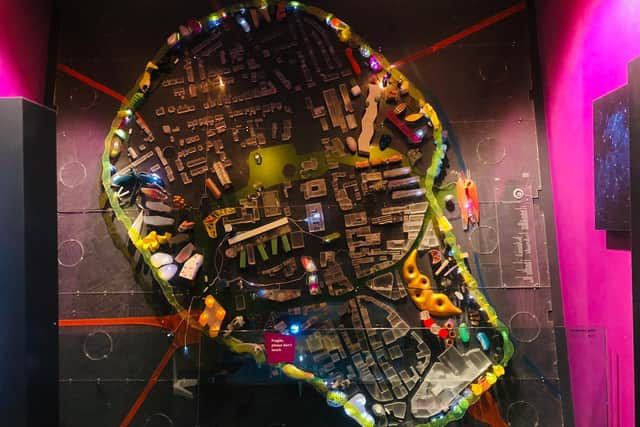

Advertisement
Hide AdAdvertisement
Hide AdNow, Barnsley boasts the Glassworks, bringing visitors from all over to shop in the world-famous market, and stop for a bite in one of the 12 food outlets in the upstairs Market Kitchen.
The sleek, stylish buildings have turned around a once tired looking town centre into a modern, welcoming place that people want to visit.
The town centre, however, would have looked unrecognisable if a 2002 plan to transform Barnsley into a Tuscan Walled Village would have come to light.
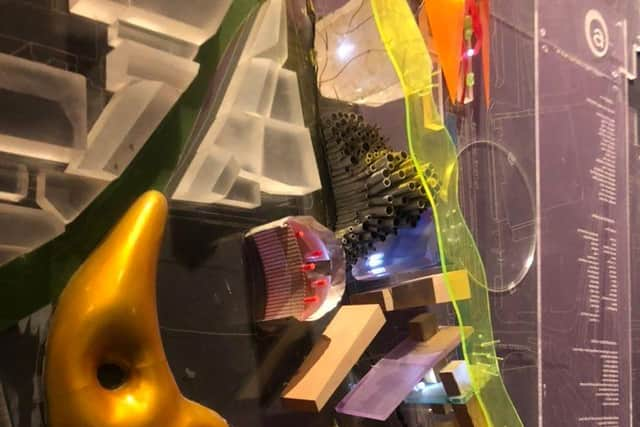

Architect Will Alsop’s futuristic plan would have seen the Town Hall circled by modern buildings, reminiscent of a Tuscan Walled village.
Advertisement
Hide AdAdvertisement
Hide AdNot content with just knocking down and rebuilding some of the older, buildings in town, Alsop’s vision was of an almost sci-fi remimagining of a hill town, modelled on the walled village of Lucca on the Serchio River.
The icing on the cake would have been a beaming halo of light, circling the centre 60 feet in the air to encase the town in a glow of light.
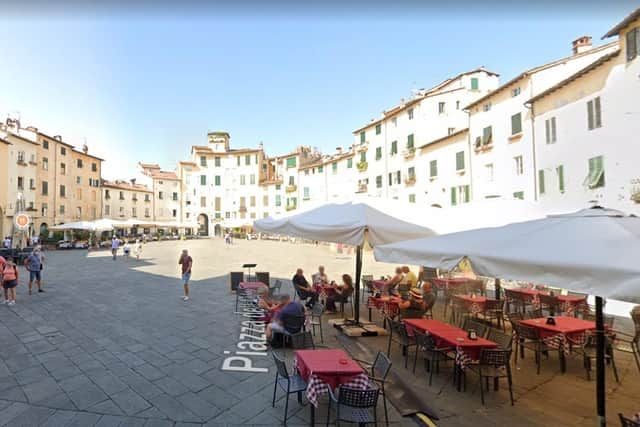

The mile-and-a-half town wall would have been a living wall, defining the entrance to town, made up of housing, offices and restaurants.
The plans were part of a Renaissance Towns project, supported by the now-defunct regional development agency Yorkshire Forward, which aimed to bring flagging communities back to life.
Advertisement
Hide AdAdvertisement
Hide AdThe plan attracted national and even international attention – much of it sceptical, some of it mocking – it didn’t help that the news broke on April Fools’ day in 2002.
Barnsley Council’s leader, Sir Steve Houghton, oversaw the plans, and looking back now, says the plans changed the council’s way of thinking about what a future town centre would look and feel like.
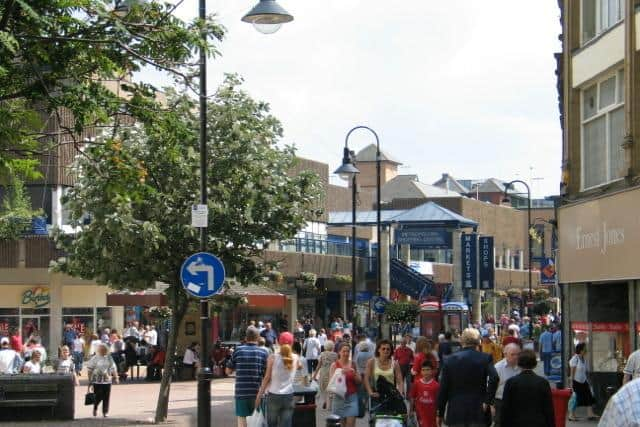

In the late 90’s and early 00’s, Barnsley was on the verge of losing its identity – the pits had all but closed, unemployment was at 9.5 per cent as of June 1998, and no doubt those in the council chamber would have wanted to give people something to look forward to – something to put Barnsley back in the headlines for all the right reasons.
Sir Steve said: “We hadn’t really thought in any great depth into what our future town centre would look and feel like, so the plans from Will challenged our thinking around all that.
Advertisement
Hide AdAdvertisement
Hide Ad“They made us sit up and think, take a step back and look at it differently. When we did that we realised that his plans weren’t meant to be taken literally.
“It was the principles of town development that we took from them.
“He spent a lot of time telling us that if we wanted to be successful and achieve sustained success for our town centre, these were the things we needed to do, the principles we had to follow.
“This was a new way of thinking and a huge challenge but we had to learn to see town centre development differently.”
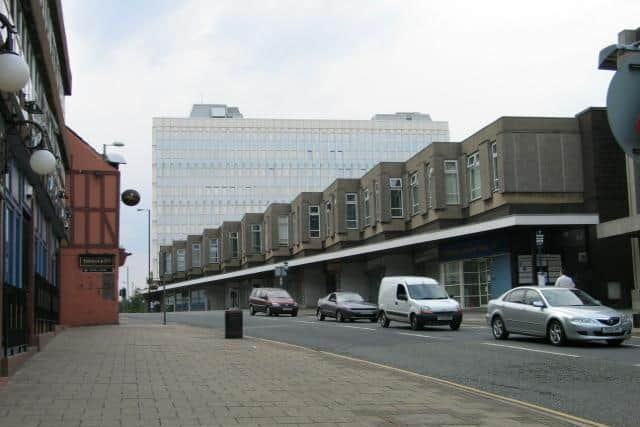

Advertisement
Hide AdAdvertisement
Hide AdIn 2000, the Labour government published the “State of English Cities” white paper, which gave regional development agencies stronger planning powers and funding to regenerate small towns.
Yorkshire Forward committed £700m to 400 projects to revitalise coalfield towns, transforming them into world-class urban centres, and drew up a masterplan for the regeneration of Barnsley over the next 30 years.
The plans were regarded with curiosity and scepticism. Some welcomed the idea with open arms, but I can well imagine folk eyeing up the architects making sketches in town with suspicion and curiosity.
Paul Whitehouse, a former journalist who covered the area at the time, said that Barnsley was “adrift” in terms of its identity, after suffering the loss of its main industry.
Advertisement
Hide AdAdvertisement
Hide Ad“One of the major industries, if not the major industry in town over the last couple of 100 years had vanished in the last 15 or 20 years. And someone came up with with the idea of looking for a fresh image.”
Paul says the idea was ridiculed, but equally intrigued people.
It attracted headlines such as “Halo over Barnsley”, and “Barnsley’s Italian job takes shape”.
In this capacity, it could be argued that the vision, even if it didn’t go ahead, did its job. It brought positive attention to Barnsley – it was going to be a futuristic, thriving town, attracting jobs and investment.
Advertisement
Hide AdAdvertisement
Hide AdSir Steve said the plans were: “ambitious, unlike anything Barnsley had seen before.”
“They certainly got people engaged and talking about how they would improve the town centre, what they would wanted to see.
“I said at the time ’We set out to put Barnsley on the map – we have certainly done that.’”
“It was very difficult to draw any obvious parallels with Tuscany either in terms of climate, architecture, outlook or anything else,” added Paul.
Advertisement
Hide AdAdvertisement
Hide Ad“But equally sort of people, I think regarded it with a sense of sort of intrigue, I suppose, and amusement.”
Thousands of residents took part in a week of workshops and consultation called ‘Rethinking Barnsley’, which was a chance for them to shape the plans in collaboration with Mr Alsop and the council.
Sir Steve added: “The workshops with Will were intellectually challenging but he was also highly entertaining and people loved him and got huge enjoyment from the process.
“There was a large-scale model of the town with a ferret sitting in the middle of it, and a model fighter-plane sitting somewhere else.
Advertisement
Hide AdAdvertisement
Hide Ad“It was fantastical in one way. Will wanted people to leap outside their usual boundaries, apply their imagination, let your thinking go, believe you can do anything.
“Lots of young people and school children were involved.
“Those young people have now grown up and many of them will have seen our new town centre being built – they played a part in that.
“What came out of the workshops was that people told us they wanted water, to open up the town centre – that’s why we have since put the fountains in.
“Will was always interested in beauty so he encouraged people to share their ideas on making it a beautiful place.
“The reception at the time was mixed.
Advertisement
Hide AdAdvertisement
Hide Ad“A lot of people welcomed doing something different, others found the concepts hard to grasp and took it literally rather than conceptually.
“But the plans were a provocation to us all – stimulating thoughts and ideas.No doubt it set the town alive with people talking about the future.”
It was hoped that a shining new town centre would encourage new businesses to fill the void left by the coal industry, but the plan fell through when developer Multiplex withdrew from the £200 million scheme in April 2005.
The firm cited “problems with the design”, adding that they withdrew following a lengthy due-diligence process.
Advertisement
Hide AdAdvertisement
Hide AdDavid Kennedy, director of development at Barnsley Council, told the Architects Journal at the time: ‘We weren’t in the same position with the developer after the takeover as before. Negotiating with someone who’s taken on lots of other commitments was a bit of a risk.’
Mr Kennedy took up the role of chief executive at Northampton Borough Council in 2007, but resigned in 2017 over a £10m loan to Northampton Town Football Club.
Legacy
So, what remains of such a fanciful plan in 2021? What legacy has the famous Tuscan Village idea left on Barnsley?
When 100 homes at the old Dunlop Slazenger Factory off Doncaster Road were approved in 2004, the main road through the estate was named “Tuscany Gardens”, as a nod to the theme.
Advertisement
Hide AdAdvertisement
Hide AdThe four metre by three metre model of the town – complete with lights – was produced by Amodels and unveiled in 2002 at the Venice Architecture Biennale, and has travelled the world, featuring in architectural exhibitions from Toronto to Manchester.
Will Alsop sadly died on May 12 2018, but his larger-than-life model now resides in the Experience Barnsley Museum and Discovery Centre, in the Town Hall – a memento of what could have been.
Reflecting on the changes to Barnsley in the last 20 years, Sir Steve said: “The principles of the ‘walled town’ are not about building a wall.
“Will wanted us to think about how people can have a sense of arrival and departure coming in and out of the town.
“In Tuscany, it’s already there with the wall.
Advertisement
Hide AdAdvertisement
Hide Ad“But we’ve worked to create that sense of arrival through key buildings.
“The Glass Works is an Alsop legacy.
“The SEAM is an Alsop legacy.
“Gateway Plaza is an Alsop legacy.
“Will wanted a town for the people of Barnsley, created with the people of Barnsley, a place for all our people.
“Without Will Alsop, this would never have happened. I’m sorry he’s not around to see it.
“I’m sorry we’re not able to give him the thanks that he deserves.
Advertisement
Hide AdAdvertisement
Hide Ad“We will be forever grateful to Will for the help and support he gave us.
“All the dreams people shared with Will have come to fruition.
“Yorkshire Forward and Will Alsop helped set us on a journey, and gave us the confidence to demand the best for Barnsley.
“The next phase of the Alsop project will be the Market Gate Bridge which will be an iconic point of arrival for many into Barnsley.
Advertisement
Hide AdAdvertisement
Hide Ad“We are now living in a place Alsop and the people of Barnsley helped us create.
“When you sit on the terrace of Market Kitchen on a sunny day looking across Glass Works Square, it feels like this could be Tuscany.
“But it’s not Tuscany. It’s even better. It’s Barnsley.”
2004 images reproduced with kind permission of Barnsley Archives and Local Studies.
